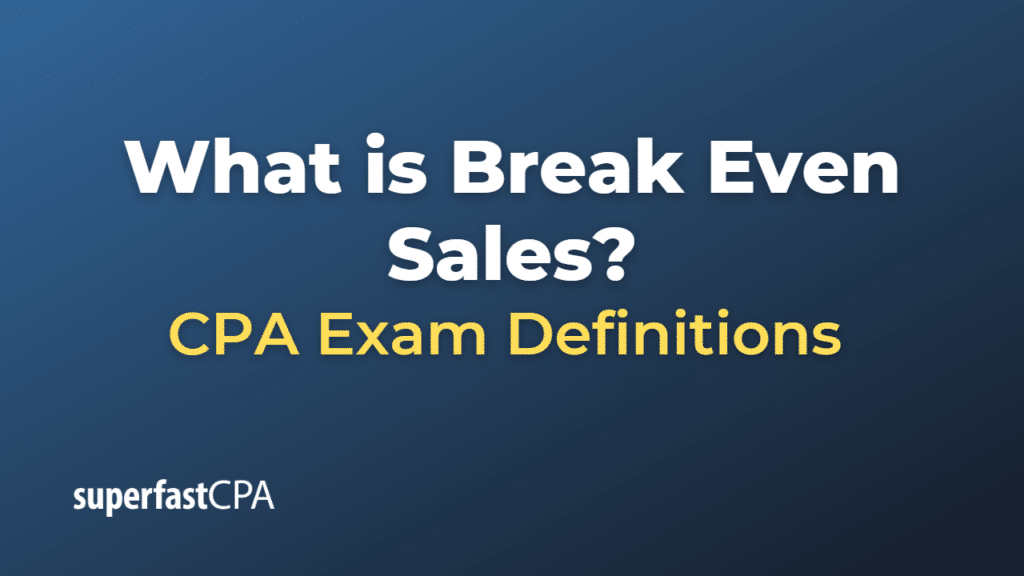Break Even Sales
Break-even sales refer to the level of sales revenue a business needs to generate to cover all its costs, including fixed and variable expenses. At this point, the business neither makes a profit nor incurs a loss. It is a critical financial metric that helps businesses understand their cost structure, pricing strategies, and financial performance. It also aids in making informed decisions related to profitability, growth, and risk management.
To calculate the break-even sales in terms of revenue, you can use the following formula:
\(\large \text{Break-Even Sales (in revenue)} = \frac{\text{Fixed Costs}}{1 – \frac{\text{Variable Costs}}{ \text{Sales Revenue}}} \)
Alternatively, if you know the contribution margin ratio (which is the percentage of sales revenue that contributes to covering fixed costs), you can calculate the break-even sales as follows:
\(\text{Break-Even Sales (in revenue)} = \frac{\text{Fixed Costs}}{\text{Contribution Margin Ratio}} \)
The break-even sales figure allows businesses to determine the minimum sales revenue required to cover their costs. It is an essential metric for setting sales targets, evaluating the feasibility of new product launches or expansion plans, and making strategic decisions about pricing, production levels, and cost reduction initiatives.
Example of Break Even Sales
Let’s consider a fictional company, “Gadget Pro,” which sells a unique type of electronic gadget. The company wants to determine its break-even sales to understand the revenue needed to cover all costs without making a profit or a loss.
The following information is available for Gadget Pro:
- Fixed costs: $50,000 per month (includes rent, salaries, equipment lease, etc.)
- Variable costs: $30 per gadget (includes materials, labor, packaging, etc.)
- Selling price: $60 per gadget
First, we need to calculate the contribution margin ratio, which is the percentage of sales revenue that contributes to covering fixed costs:
Contribution Margin per Gadget = Selling Price per Gadget – Variable Cost per Gadget
Contribution Margin per Gadget = $60 – $30
Contribution Margin per Gadget = $30
Contribution Margin Ratio = (Contribution Margin per Gadget / Selling Price per Gadget) x 100
Contribution Margin Ratio = ($30 / $60) x 100
Contribution Margin Ratio = 0.5 or 50%
Now, we can calculate the break-even sales in terms of revenue:
Break-Even Sales (in revenue) = Fixed Costs / Contribution Margin Ratio
Break-Even Sales (in revenue) = $50,000 / 0.5
Break-Even Sales (in revenue) = $100,000
Gadget Pro needs to generate $100,000 in sales revenue per month to cover all its fixed and variable costs and achieve a break-even point. This information can help Gadget Pro make informed decisions regarding pricing, production, cost reduction initiatives, and sales targets to ensure the business’s financial stability and growth.













